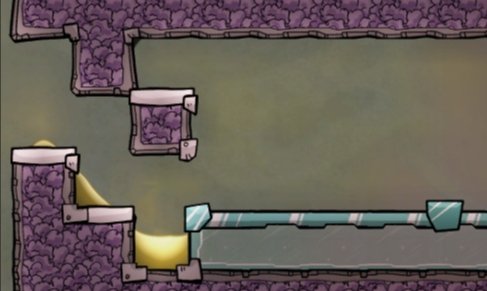Our purpose of metal volcanoes is mainly for metal products. It is convenient to use the heat brought to generate electricity, or as long as the heat can be swallowed up. The heat brought during the eruption is extremely high, and the product temperature is extremely high. Thousands of degrees Celsius, so the module must pay attention to the selection of materials on the one hand, and on the other hand, it needs to provide enough buffer for these huge amounts of heat to prevent the temperature from rising instantly. The first step is to build the frame, with an overall size of 20X7, and the second step is to pump the vacuum by turning the throttle. , the third step is to pour water and build the building. Pour at least 3 tons of water inside the module. The fourth step is to build the background building. Lead can be used for wires, but they must not pass through the volcano. The fifth step is to pour liquid into the cold cycle. The sixth step is to check. .

Details on how to build the metal volcano development module in "Anoxic"
Note, what I am talking about here is the metal volcano development module. Can this module be used for ordinary volcanoes? It can be used, but it is not easy to use, because generally speaking, we still consider ordinary volcanoes as a source of power, so we want it to be slow and smooth. of releasing volcanic heat.
But our purpose of metal volcanoes is mainly for metal products, and the heat brought by them is used for power generation, or as long as the heat can be swallowed.
Compared with other springs, the biggest difference between metal volcanoes is that the heat brought during the eruption is extremely high, and the product temperature is basically thousands of degrees Celsius. Therefore, the module must pay attention to the selection of materials on the one hand (not only Overheating and melting point), on the other hand, these huge amounts of heat need to be buffered enough to prevent the temperature from rising instantly.

The simplest idea is to expand the heat capacity, because the temperature change is inversely proportional to the heat capacity, so the most original solution is to "pour water". As long as there is enough water, the temperature change will not be too drastic, and finally use a steam engine to transfer the heat Just absorb it. (Just pouring water is useless, no matter how large the heat capacity is, it will not make the heat disappear even a little bit, such as with heat swallowing equipment)
Therefore, the idea of simple modules is indeed very simple, and it is not difficult to build. The most important thing that novice friends need to pay attention to is the selection of materials.
The first step is to build the framework
The overall size is 20X7, the insulation bricks can be made of igneous rock, and the window bricks can be made of diamond. Pay attention, pay attention! Don't dig up the volcanic vent unless you're sure your villain is fast enough to get the job done during the dormant period.

The second step is to pour the throttle and vacuum. Everyone is familiar with this step in detail. Note that it is best to pour oil, crude oil can also be poured here, but water is absolutely not allowed. Then vacuum the inside.

The third step is to pour water and build a building.
Pour at least 3 tons of water inside the module. The principle is that one steam engine should be equipped with at least one ton of water. Although it is actually enough to develop ordinary metal volcanoes, considering that novices may develop volcanoes similar to tungsten, aluminum or even ordinary volcanoes, 3 Taiwan be safe! Wait until you become familiar with it before deciding whether to use more or less. (Even one Golden Volcano is enough)

Steam engines can be made of lead, and everything in the steam chamber is made of steel! make no mistake
Spread a layer of oil on the bottom of the steam engine, at least 30KG per grid. If you are in the mood, you can also wrap the top of the steam engine with insulating bricks.

The fourth step is to build the background building
Lead can be used for wires, but it must not pass through the volcano. The temperature will be extremely high in an instant and the lead will definitely melt (or in other words, it is best not to cross the volcano, especially the vent).

For automation, you can use lead as usual, the time sensor is green 1 red 20, and the liquid pipeline temperature sensor is first set to be greater than the maximum temperature to avoid liquid cooling startup. (But do not check the box for refining metal first, wait until the steam chamber is filled with steam, otherwise it will be overheated and damaged)

Water pipes and liquid cooling circulation are the same as before. Pay attention to the pipe bridging method and pipe type. (Do not use lead for heat pipes)

The material of the transport track does not matter. Remember not to pass through the volcanic vent (there will be no cycle detection here, it is not necessary for novices). Be sure to pass through the diamond bricks below, which greatly increases the heat exchange efficiency.

Attach some diamond temperature changing plates to the steam room as appropriate. It is best to stick it on the volcano, but you can stick it on the side next to it.

The fifth step is to fill the liquid cooling cycle, bypass the liquid filling, and use contaminated water as the coolant.

The sixth step is to check. Be sure to check whether the materials are correct and whether the various lines and pipelines are correct. If necessary, it is best to save a file. When everything is checked, dig up the crater, remove the pieces, and lock the outside door! Don't let little people with cheap hands come in and get hot metal shards. (Clean up the steam room, please)
After the volcano erupts, the steam chamber is filled with steam. Then set the liquid pipe temperature sensor to >30°C. After it is filled with steam, check the corresponding metal of the loader. Otherwise, the metal fragments will be overheated and damaged in one cycle. The temperature of the final output iron is about 130°C. There is no need to further cool the iron (if you want, just change the track chute to the inside and throw it into the oil for liquid cooling)